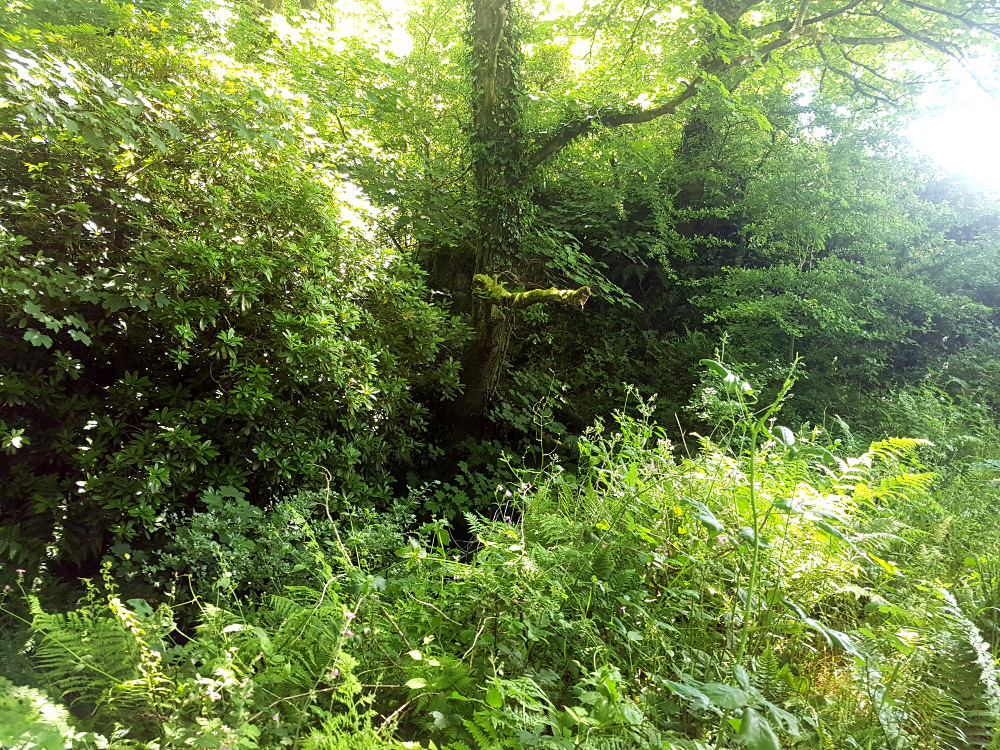Disclaimer: the engine house is definitely in the photos. Behind all the green stuff. Honestly.
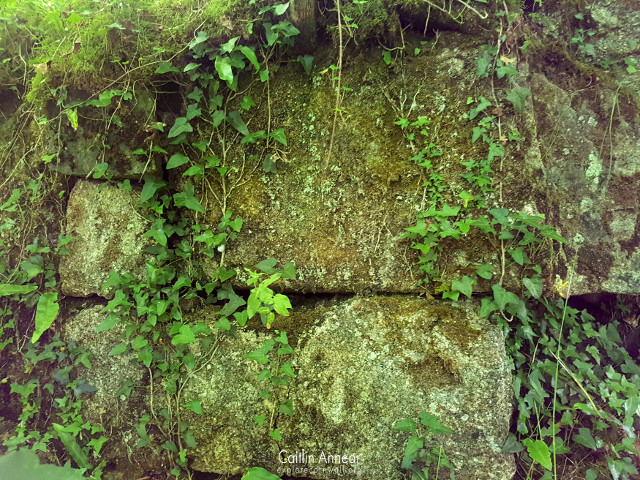
Wendron Consols opened as an underground mine in 1851/2, although records show it was working for at least 90 years previously (and possibly as early as 1493 as tin streaming works). It was a moderately successful mine that worked six lodes, producing both copper and tin. From 1854, its neighbour Wheal Roots and the Trenear stamps were put under the same management and the majority of its ore was sent to this site for processing. Wendron Consols closed for good in 1869.

In 1855, a 60″ pumping engine was built and pumped out of four different shafts, using flat rods to achieve this. At this time, 24 heads of stamps were being run by waterwheels, with another 8 heads being added shortly after.
In 1860, a pumping engine was erected on Baldee’s lode. This would have been to the east of Engine shaft, although nothing of this remains today. The number of stamps was increased to 51 heads, with a further 4 being added the following year.
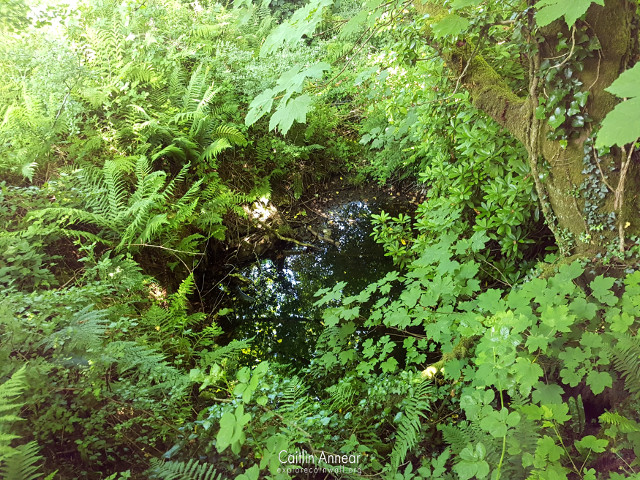
In 1867, a 70″ pumping engine with 2 boilers, a 50″ pumping engine and 18″ whim with 1 boiler were advertised for sale. The same 70″ and 18″ engines were for sale again each year after. In terms of winding engine houses, all my resources have contradicted each other so here’s a list: Spargo: 1864 24″ winding engine house, Acton and Brown: 18″ whim, advertised for sale in 1866, Hamilton Jenkin: 22″ whim erected in 1860.
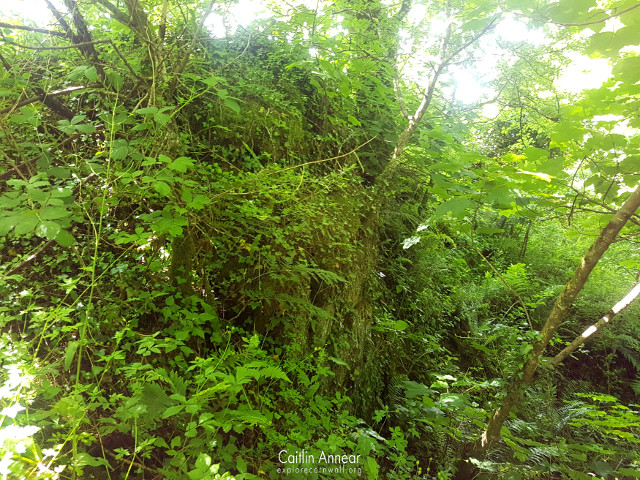
Lodes included Richard’s, Flander’s, Liddlecote, Hurrler’s/Main, Grace and Grenfell. Output for the mine between 1854-1869 was 2,390 tons of tin and 48 tons of 16% copper.
The mine had a number of shafts: Engine (55-fathom/100m), Hill’s (80-fathoms/146m), Richard’s (20-fathoms/37), Barclay’s (12-fathoms/22m), Bishop’s (12-fathoms/22m), Hurler’s (32-fathoms/59), Robert’s (22-fathoms/40m), Sleeman’s (35-fathoms/64m) and an unnamed shaft (35-fathoms/64m).
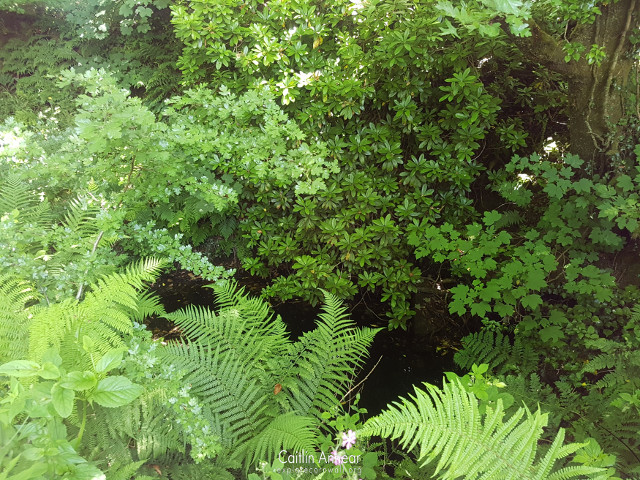
All that remains of Wendron Consols is the wall of the main pumping engine and the puddle that is the top of its shaft. Said engine house currently lives in an overgrown hedge along a public footpath in Trenear.
I can’t find any mention that this shaft is officially capped, nor any of the other shafts that are situated off the footpath in the jungle. The land around the footpath is all private property, seriously overgrown and dangerous to venture into.
There is no parking for this site.
Brown, K. and Acton, B. (2007) Exploring Cornish Mines: Volume Two. 2nd edn. Truro: Landfall Publications.
Dines, H. G. (1956) The metalliferous mining regions of south-west England. British Geological Survey.
Hamilton-Jenkin, A. K. (1978) Wendron Tin. Falmouth: Century Litho.
Nance, D. and Brown, K. (2014) A complete guide to the engine houses of West Cornwall. Gloucestershire: Lightmoor Press.
Poldark Mine (no date). Available at: http://www.poldarkmine.org.uk/ (Accessed: 6 September 2018).
Royal Cornwall Gazette (1867) ‘Stannaries of Cornwall’, 16 May.
Royal Cornwall Gazette (1868) ‘Stannaries of Cornwall’, 16 January.
Royal Cornwall Gazette (1869) ‘Stannaries of Cornwall’, 24 July.
Spargo, T. (1864) The Mines and Cornwall and Devon: Statistics and Observations. London: Vincent & Skeen.
